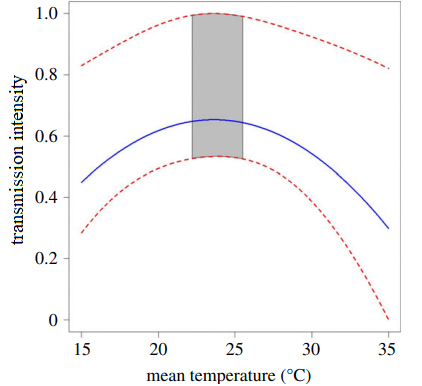Research
Disease and decisions

During an infectious disease outbreak, individuals and governments may respond to their perceived or actual vulnerability to severe by adopting protective measures. interplay between behavior and disease may produce complicated, nonlinear dynamics. I used mathematical modeling to study how awareness-based protective behavior in populations with strong group divisions can fundamentally alter epidemic shape and size (paper). Using county-level data from the state of Georgia, I found an association between early implementation of public heath measures and reduced mobility in counties with the greatest risk of large outbreaks (paper). I also helped develop a website displaying real-time risks of COVID-19 exposure at events by county to support more informed decision-making (paper). Working with a large Twitter dataset, I showed that perceived experts are a sizable and important group within the anti-vaccine community (paper).
Predicting and preventing outbreaks

Infectious diseases may emerge and re-emerge rapidly and early public health measures can be especially crucial to avoid large outbreaks. I applied statistical methods based on the theory of critical slowing down to detect early warning signals preceding a historical malaria resurgence in Kericho, Kenya (paper). I contributed to a model predicting West Nile Virus neuroinvasive disease, which consistently outperformed an ensemble model of forecasts submitted to a Centers for Disease Control and Prevention forecasting challenge (paper). Using an early model of COVID-19 transmission, I helped estimate the impact of initial nonpharmaceutical interventions in Santa Clara County and evaluated how near-term forecasting accuracy of the model changed over time, generalizing to models initialized under conditions of considerable uncertainty in the early stages of an outbreak of a novel pathogen (paper).
Climate change and vector-borne disease

Anthropogenic climate change is a major threat to human and planetary heath. In particular, transmission of mosquito-borne diseases like malaria and Zika is expected to shift dramatically because of the temperature sensitivity of mosquito vectors. I showed that transmission of Zika in Latin America exhibited a nonlinear relationship with temperature, peaking at intermediate temperatures (paper). I participated in a literature review demonstrating how different observed correlations between dengue cases and temperature are predicted by work from mosquito thermal biology (paper). I also contributed to a book chapter examining how climate and other environmental factors may influence vector-borne disease and a paper synthesizing evidence on how mosquitoes may adapt to climate change, with implications for disease transmission. I led an analysis quantifying the additional dengue cases caused by Cyclone Yaku in Peru and contributed to a project estimating how historic and future climate warming are changing dengue burden worldwide.
You can learn more about my dissertation research by checking out this poster or watching this recording of my defense!